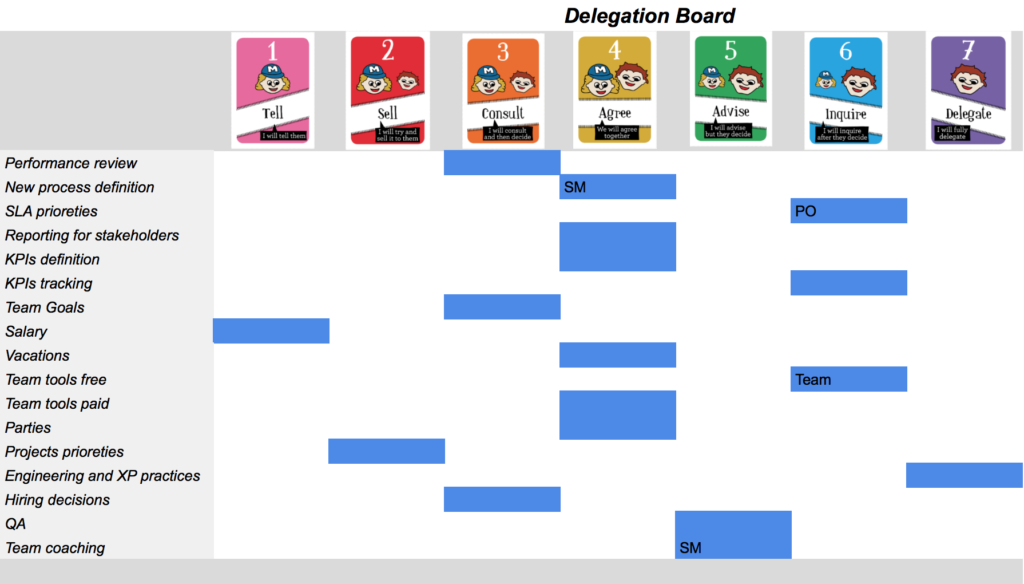Delegation Poker Situations
Many times there is not clarity about some hard decisions that Managers has to rule and many times there are some decisions that should be delegated (of course after gaining the truth).
- Delegation Poker Situations Youtube
- Delegation Poker Situations Examples
- Delegation Poker Situations Chart
- Delegation Poker Situations List

Jurgen Appelo and Management 3.0 have created a tool called Delegation Poker which can help us with the delegation process. They employ seven cards representing the different levels of delegation. As a team, we can list activities that require a decision (ex: new hire, product release, etc.). Delegation Poker – Management 3.0 ap-admin - September 12, 2020 0 'When working in complex environments with multiple teams and complex customer behavior, decision making and priority setting is very important.'

If you have to coach managers one of the suggestions is to delegate any decisions in order to get more time to dedicate to coach their employees.
Use Delegation Poker to make clear who’s responsible for what and to what level. This is a method where you can encourage employee engagement through controlled self-organization and clarified value and decision-making. How do we play Delegation Poker? Delegation poker clarifies the level of authority for certain actions between 2 entities: for example between a team and a manager, between a team and a product owner, between 2 teams, between a product and its users. It’s important to notice there are several levels of delegation. The Delegation Poker game was first played at the Scrum Gathering in Amsterdam.Since then I had people play it in a number of workshops, and I improved it with their feedback. Here is the first.
I found this amazing exercise called “Delegation Poker” in Management 3.0 written by Jurgen Appelo.
The following statement were extracted from Management 3.0

“Delegation often comes down to either “I do it” or “You do it.” But there are really Seven Levels of Delegation. Use Delegation Poker to make clear who’s responsible for what and to what level. This is a method where you can encourage employee engagement through controlled self-organization and clarified value and decision-making.

Delegation Poker Situations Youtube
How do we play Delegation Poker?

Delegation Poker Situations Examples
Each team plays this game differently, so you can follow some of the more common rules we’re sharing here or you can make up your own. It’s all about organizing how you and your team look at delegation and self-organization.
Start by making a list of pre-defined cases or situations in which you want to create a delegation policy, establishing who has what influence. This can range from project design and authority to hiring new team members.
Team members should be organized in groups of three to seven people. Each teammate gets a set of cards numbered 1 through 7, signifying the Seven Levels of Delegation (see below.)
Delegation Poker Situations Chart
Team members will repeat the following steps for each pre-defined case:
Delegation Poker Situations List
- One person picks out a situation to read aloud OR he tells a story from personal experience.
- Each player chooses one of the seven delegation cards privately, reflecting on how she would delegate the decision in that particular situation.
- When all players have decided, they reveal their selected cards.
- Everyone earns points according to the value of their selected card, except the players that are the “highest minority” (see below).
- Let the people with the highest and the lowest cards explain the reasoning behind their choices.
- You can then create a Delegation Board to show the results of your consensus.”
I used this exercise with a Product Owner, and stakeholder and a couple of Scrum Masters in order to decide many decisions such as: “Interaction between Stakeholders and Scrum team members”. I know you should think: easy. Stakeholders only have to communicate with team members through Product Owner but I ran into missing Product Owners so it is good to know what is the boundary of this way of communication.
To sum it up, this exercise is a great tool to change the behaviour of command and control. Every manager should delegate tasks time to time to get more time to do more important tasks.